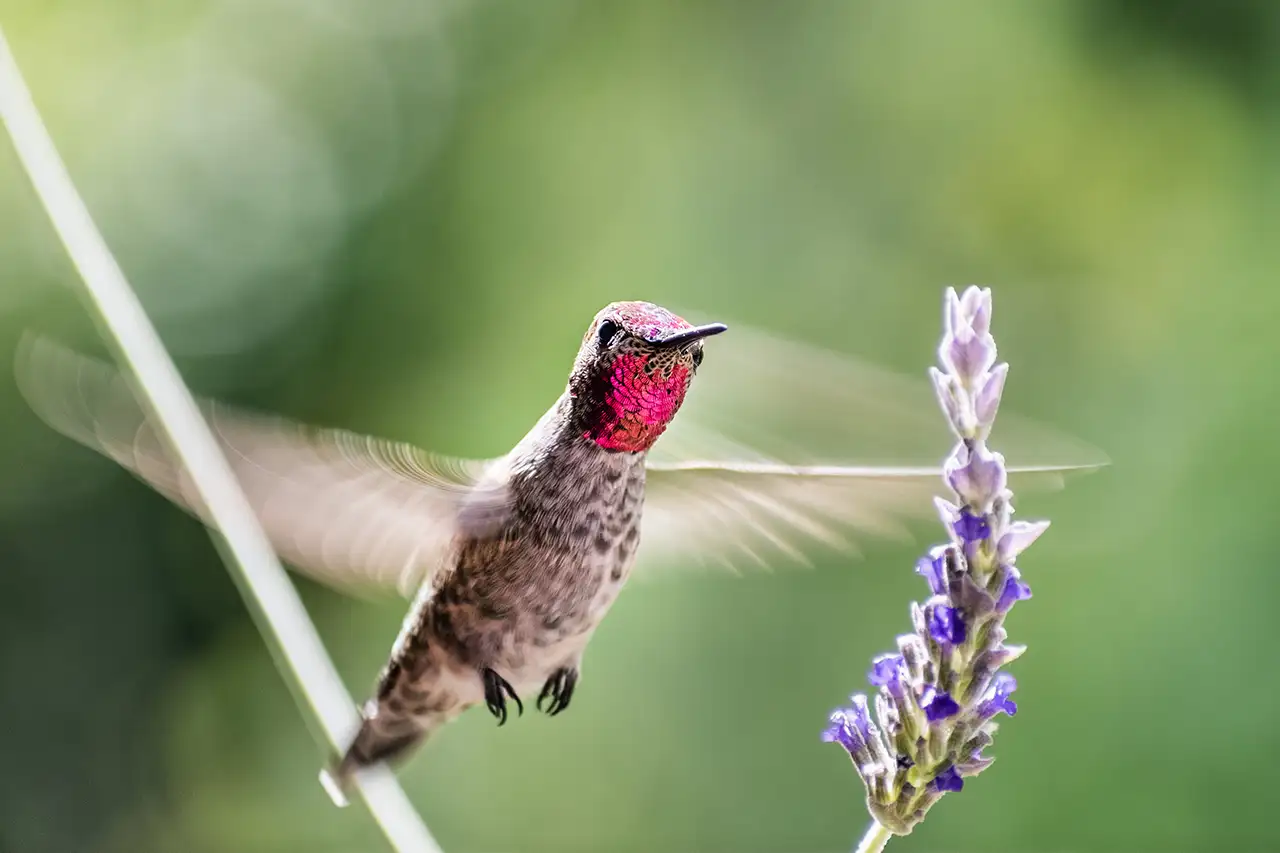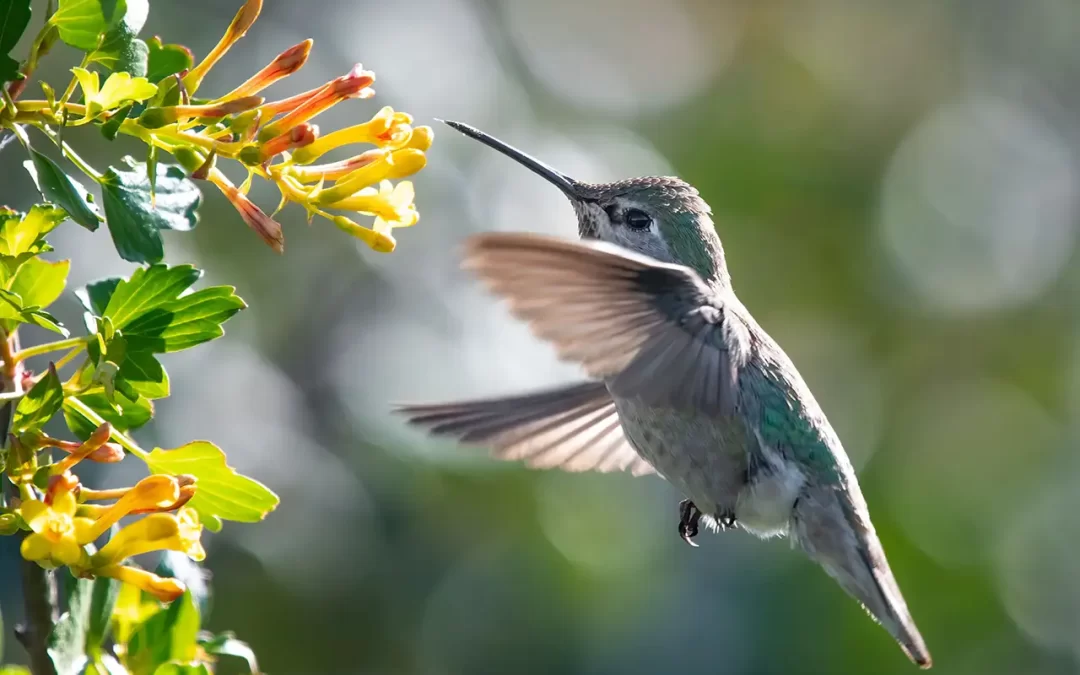Creating a hummingbird-friendly garden is like setting the stage for a vibrant spectacle of nature's tiny aviators. Hummingbirds, with their iridescent feathers and rapid wingbeats, are not only a delight to watch but also play a crucial role in pollination. This comprehensive guide will take you through everything you need to know about selecting plants that attract hummingbirds, ensuring your garden becomes a bustling hub for these enchanting birds.
Understanding Hummingbird Preferences
Hummingbirds are drawn to spaces that cater to their needs for nectar, shelter, and breeding. They have a particular affinity for brightly colored flowers, especially those in shades of red, orange, and pink. However, color alone won't keep them coming; the shape and nectar production of the flowers are also critical factors. Tubular flowers tend to be the most inviting, as their shape accommodates the hummingbirds' long beaks and tongues, allowing easy access to the nectar.
Top Plants to Attract Hummingbirds
- Bee Balm (Monarda didyma)
– Description: This perennial showcases vibrant red, pink, or purple flowers that not only attract hummingbirds but also bees and butterflies. It's easy to grow and can reach up to 4 feet in height.
– Blooming Season: Mid to late summer.
– Care Tips: Thrives in full sun to partial shade and prefers moist, well-drained soil.
- Salvia (Salvia spp.)
– Description: Available in various colors, including red, pink, and purple, Salvias are a hit with hummingbirds. They're drought-tolerant once established and can vary in size depending on the species.
– Blooming Season: Late spring through fall.
– Care Tips: Best in full sun with well-draining soil; they're low maintenance and resilient.
- Trumpet Creeper (Campsis radicans)
– Description: This vigorous vine produces large, trumpet-shaped flowers in shades of orange and red, creating a perfect feeding spot for hummingbirds.
– Blooming Season: Summer.
– Care Tips: It requires full sun and well-drained soil but be cautious as it can become invasive.
- Hummingbird Mint (Agastache)
– Description: Known for its aromatic foliage and spikes of tubular flowers, Hummingbird Mint is a perennial that comes in colors like pink, orange, and purple.
– Blooming Season: Summer to early fall.
– Care Tips: Prefers full sun and well-drained soil; drought-tolerant once established.
- Fuchsia (Fuchsia spp.)
– Description: With its unique, pendulous flowers in shades of pink, purple, and white, Fuchsia is particularly appealing to hummingbirds.
– Blooming Season: Late spring to fall.
– Care Tips: Thrives in partial shade to full shade and moist, well-drained soil.
- Lantana (Lantana camara)
– Description: This perennial, treated as an annual in cooler climates, displays clusters of small, colorful flowers that attract hummingbirds and butterflies.
– Blooming Season: Summer to fall.
– Care Tips: Prefers full sun and can tolerate various soil types, including those less fertile.
- Columbine (Aquilegia)
– Description: Columbines are known for their distinctive, bell-shaped flowers and long spurs, offering an abundant nectar source.
– Blooming Season: Spring.
– Care Tips: Best in partial shade but can tolerate full sun in cooler climates; prefers moist, well-drained soil.
- Penstemon (Penstemon spp.)
– Description: Penstemons boast tubular flowers in various colors, making them a top choice for attracting hummingbirds.
– Blooming Season: Late spring to early summer.
– Care Tips: They prefer full sun to partial shade and well-drained soil.

- Coral Bells (Heuchera)
– Description: Coral Bells are prized for their colorful foliage and delicate bell-shaped flowers on slender stems, attracting both hummingbirds and bees.
– Blooming Season: Late spring to early summer.
– Care Tips: Best in partial shade and well-drained soil; they're also drought-tolerant once established.
Designing Your Hummingbird Garden
– Plant Diversity: Incorporate a variety of plants to ensure continuous blooming throughout the seasons, providing a steady food source for hummingbirds.
– Group Plantings: Plant flowers in groups to increase visibility and attract more hummingbirds.
– Shelter: Include trees and shrubs to offer resting and nesting spots for hummingbirds.
– Water Source: Adding a water feature, like a misting fountain, can provide hummingbirds with a place to bathe and drink.
Maintenance Tips for a Thriving Garden
– Regularly deadhead flowers to encourage more blooms.
– Keep the soil moist but well-drained to prevent root rot.
– Apply a layer of mulch to retain soil moisture and regulate temperature.
– Be mindful of pesticide use, as it can harm hummingbirds and their food sources.
Final Thoughts
Attracting hummingbirds to your garden is a rewarding experience that brings life and color to your outdoor space. By choosing the right plants and creating a welcoming environment, you can enjoy the company of these fascinating birds throughout the gardening season. Remember, a garden that caters to hummingbirds' needs not only benefits them but also contributes to the ecosystem by supporting pollination. So, start planning your hummingbird-friendly garden today and get ready to be mesmerized by the flurry of activity it brings.

